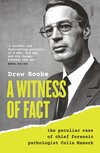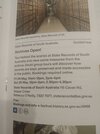- Dec 27, 2016
- 26,748
- 56,696
- AFL Club
- Western Bulldogs
- Moderator
- #1
This thread may be used to post the Family Murders media related content. To include press and gathered photographs from various sources.
Please feel free to post but as this is a no discussion thread, comments will be deleted or moved at discretion.

WHO'S WHO
VICTIMS
AB - Alan Barnes 16yo
NM - Neil Muir 25yo
PS - Peter Stogneff 14yo
ML - Mark Langley 18yo
RK- Richard Kelvin 15yo
* DS - Derrance Stevenson high risk lifestyle pornographer and criminal lawyer shot to death
DECEASED
DSD - Denis St Denis hairdresser
RBD - Richard Dutton Brown the magistrate
PF - Pru Firman
SN - Sarah Novak
BG - Brian Gant
NB - Noel Brook also known as Di Di
TP - Trevor Peters of the diaries
PM - Dr. Peter Leslie Millhouse acquitted for the murder of Neil Muir
LIVING until further notice
BVE - Bevan von Einem also known as 'Bevbang' to inner circle and 'Vonnie' in the prison system
Mr R - The businessman name suppressed
SGW - Dr Stephen George Woodards
Mr. B - Teenage prostitute and informant name suppressed
JL - Jacquie the nurse mentioned in the ebook 'Dissected' as a good friend of and who rented a unit with Mr B close to BVEs unit . Suspected to be used as a lure and in the car when Richard Kelvin was abducted.
LT - Lewis Turtur also known as 'Louie'
A - The older teenage boy Peter Stogneff's parents feel may have had something to do with their son's abduction
RR - Raymond Rozankowski who was a friend of BVE and lived in the same street as A
DK - Darko Kastellan assistant to Gambardella
GG - Gino Gambardella chiropractor fled to Italy
*DS - David Szach convicted for the murder of criminal lawyer Derrence Stevenson
Please feel free to post but as this is a no discussion thread, comments will be deleted or moved at discretion.

WHO'S WHO
VICTIMS
AB - Alan Barnes 16yo
NM - Neil Muir 25yo
PS - Peter Stogneff 14yo
ML - Mark Langley 18yo
RK- Richard Kelvin 15yo
* DS - Derrance Stevenson high risk lifestyle pornographer and criminal lawyer shot to death
DECEASED
DSD - Denis St Denis hairdresser
RBD - Richard Dutton Brown the magistrate
PF - Pru Firman
SN - Sarah Novak
BG - Brian Gant
NB - Noel Brook also known as Di Di
TP - Trevor Peters of the diaries
PM - Dr. Peter Leslie Millhouse acquitted for the murder of Neil Muir
LIVING until further notice
BVE - Bevan von Einem also known as 'Bevbang' to inner circle and 'Vonnie' in the prison system
Mr R - The businessman name suppressed
SGW - Dr Stephen George Woodards
Mr. B - Teenage prostitute and informant name suppressed
JL - Jacquie the nurse mentioned in the ebook 'Dissected' as a good friend of and who rented a unit with Mr B close to BVEs unit . Suspected to be used as a lure and in the car when Richard Kelvin was abducted.
LT - Lewis Turtur also known as 'Louie'
A - The older teenage boy Peter Stogneff's parents feel may have had something to do with their son's abduction
RR - Raymond Rozankowski who was a friend of BVE and lived in the same street as A
DK - Darko Kastellan assistant to Gambardella
GG - Gino Gambardella chiropractor fled to Italy
*DS - David Szach convicted for the murder of criminal lawyer Derrence Stevenson






